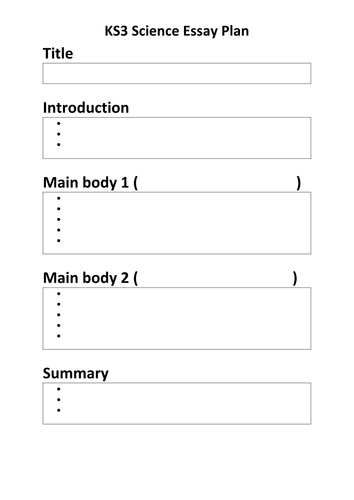243Uploads
111k+Views
55k+Downloads
Physics

P7.2 The discovery of the nucleus
AQA GCSE Sciences (9-1)
Physics: P7 Radioactivity
Lesson 2: P7.2 The discovery of the nucleus
Based on the Kerboodle Resources
The AQA Kerboodle worksheet are not included so as to be acting within the TES code of conduct.

P7.4 More on nuclear radiation
AQA GCSE Sciences (9-1)
Physics: P7 Radioactivity
Lesson 4: P7.4 More on nuclear radiation
Based on the Kerboodle Resources
The AQA Kerboodle worksheet are not included so as to be acting within the TES code of conduct.

P4.3 Potential difference and resistance
AQA GCSE Sciences (9-1)
Physics: P4 Electric circuits
Lesson 3: P4.3 Potential difference and resistance
Based on the Kerboodle Resources
The AQA Kerboodle worksheet are not included so as to be acting within the TES code of conduct.

P2.4 Specific heat capacity
AQA GCSE Sciences (9-1)
Physics: P2 Energy transfer by heating
Lesson 4: P2.4 Specific heat capacity
Based on the Kerboodle Resources
The AQA Kerboodle worksheet are not included so as to be acting within the TES code of conduct.

P7.5 Activity and half-life
AQA GCSE Sciences (9-1)
Physics: P7 Radioactivity
Lesson 5: P7.5 Activity and half-life
Based on the Kerboodle Resources
The AQA Kerboodle worksheet are not included so as to be acting within the TES code of conduct.

P12.2 The properties of waves
AQA GCSE Sciences (9-1)
Physics: P12 Wave properties
Lesson 2: P12.2 The properties of waves
Based on the Kerboodle Resources
The AQA Kerboodle worksheet are not included so as to be acting within the TES code of conduct.
Keywords:
Wave speed
Period

P3.1 Energy Demands
AQA GCSE Sciences (9-1)
Physics: P3 Energy Resources
Lesson 1: P3.1 Energy Demands
Based on the Kerboodle Resources
The AQA Kerboodle worksheet are not included so as to be acting within the TES code of conduct.

P1.6 Energy dissipation
AQA GCSE Sciences (9-1)
Physics: P1 Conservation and dissipation of energy
Lesson 6: P1.6 Energy dissipation
Based on the Kerboodle Resources
The AQA Kerboodle worksheet are not included so as to be acting within the TES code of conduct.

P6.1 Density
An Ofsted inspected lesson - Outstanding
AQA GCSE Sciences (9-1)
Physics: P6 Molecules and matter
Lesson 1: P6.1 Density
Based on the Kerboodle Resources
The AQA Kerboodle worksheet are not included so as to be acting within the TES code of conduct.

P1.8 Electrical appliances
AQA GCSE Sciences (9-1)
Physics: P1 Conservation and dissipation of energy
Lesson 8: P1.8 Electrical appliances
Based on the Kerboodle Resources
The AQA Kerboodle worksheet are not included so as to be acting within the TES code of conduct.

P4.2 Current and charge
AQA GCSE Sciences (9-1)
Physics: P4 Electric circuits
Lesson 2: P4.2 Current and charge
Based on the Kerboodle Resources
The AQA Kerboodle worksheet are not included so as to be acting within the TES code of conduct.

P12.1 The nature of waves
AQA GCSE Sciences (9-1)
Physics: P12 Wave properties
Lesson 1: P12.1 The nature of waves
Based on the Kerboodle Resources
The AQA Kerboodle worksheet are not included so as to be acting within the TES code of conduct.
Keywords:
Amplitude, Frequency, Longitudinal, Wavelength, Transverse

P8.3 Resultant forces
AQA GCSE Sciences (9-1)
Physics: P8 Forces in balance
Lesson 3: P8.3 Resultant forces
Based on the Kerboodle Resources
The AQA Kerboodle worksheet are not included so as to be acting within the TES code of conduct.

P15.1 Magnetic fields
AQA GCSE Sciences (9-1)
Physics: P15 Electromagnetism
Lesson 1: P15.1 Magnetic fields
Based on the Kerboodle Resources
The AQA Kerboodle worksheet are not included so as to be acting within the TES code of conduct.
Keywords:
Magnetic field, Magnetic field lines, Induced magnetism

P1.1 Changes in energy stores
AQA GCSE Sciences (9-1)
Physics: P1 Conservation and dissipation of energy
Lesson 1: P1.1 Changes in energy stores
Based on the Kerboodle Resources
The AQA Kerboodle worksheet are not included so as to be acting within the TES code of conduct.

P1.3 Energy and work
AQA GCSE Sciences (9-1)
Physics: P1 Conservation and dissipation of energy
Lesson 3: P1.3 Energy and work
Based on the Kerboodle Resources
The AQA Kerboodle worksheet are not included so as to be acting within the TES code of conduct.

P8.4 Moments at work
AQA GCSE Sciences (9-1)
Physics: P8 Forces in balance
Lesson 4: P8.4 Moments at work
Based on the Kerboodle Resources
The AQA Kerboodle worksheet are not included so as to be acting within the TES code of conduct.

P8.7 Moments and equilibrium
AQA GCSE Sciences (9-1)
Physics: P8 Forces in balance
Lesson 7: P8.7 Moments and equilibrium
Based on the Kerboodle Resources
The AQA Kerboodle worksheet are not included so as to be acting within the TES code of conduct.

P8.8 The parallelogram of forces
AQA GCSE Sciences (9-1)
Physics: P8 Forces in balance
Lesson 8: P8.8 The parallelogram of forces
Based on the Kerboodle Resources
The AQA Kerboodle worksheet are not included so as to be acting within the TES code of conduct.

KS3 Scientific Essay Plan
I found that a lot of my KS3 were simply copying and pasting information for homework.
This was designed to get them to have to think critically about the information they are including.
Ideally, they follow the plan and you give feedback which they use along with the plan to write the actual essay.




















